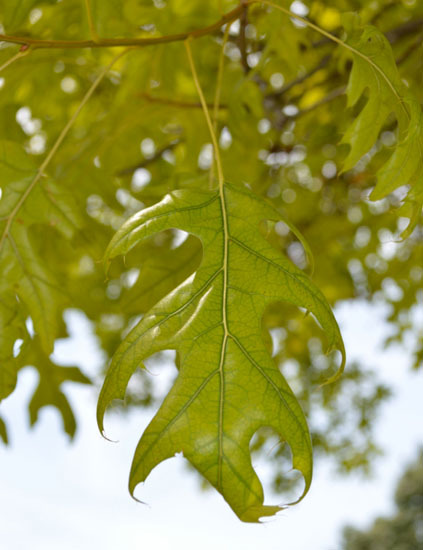Pin Oak : Pin Oak- Growth Problems & Complications
The pin oak, like any other oak, can have growth problems and complications. The tree is a classic example of a plant’s intolerance of alkaline soils. Chlorosis is the yellowing of leaf tissue and a major complication that often effects the pin oak. This occurs due to alkaline soils, causing the tree to not be able to transport iron from the root zone to the above-ground structures which leads to bad nitrogen utilization. The tree then cannot conduct efficient photosynthesis because the leaves are unable to synthesize enough chlorophyll. When the tree is not efficiently creating enough chlorophyll, photosynthesis cannot take place and the sugars, energy, and other biological compounds are not made.
Another major danger to the pin oak is oak wilt. Oak wilt is a systemic fungi disease of oaks most commonly found in the red oak family. This vascular disease has been slowly spreading across the United States and is frequently transmitted by underground root grafts. Root grafts are the places where the root systems of two adjoining oak trees come together to create one root system. The systems of oak wilt usually begin in May and early June and continue throughout the summer. Other complications with the pin oak include insect feeding, pathogens, and pests. Gypsy moths are known to be problematic for young pin oaks. Gypsy moth should be controlled when the trees are young, but older trees can tolerate infrequent defoliation.

